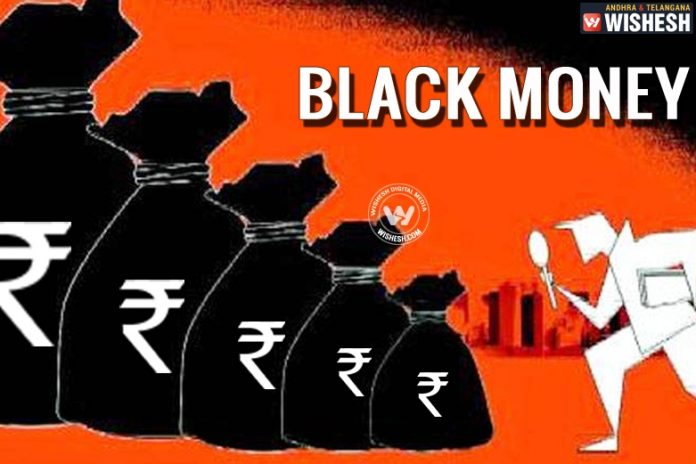The article is written by Daksha Khanna from Symbiosis Law School, NOIDA. The article discusses the structure of the real estate market. It further discusses the formation of black money and its impact on the real estate market of India.
Table of Contents
Introduction
What is real estate? We first need to deal with this question before delving into the details. The real estate sector is the most recognised sector, globally. It comprises four important sectors: housing, hospitality, commercial and retail. The growth of this sector is well complemented by the change in the corporate environment and the demand for office space as well as urban and semi-urban accommodations.
The construction industry ranks third among the 14 major sectors in terms of direct, indirect and induced effects in all sectors of the economy. It has also been anticipated that this sector will incur more non-resident Indian (NRI) investment, both in the short term and a long time. Bengaluru is favoured by most for property investment destinations for NRIs, followed by Ahmedabad, Pune, Chennai, Goa, Delhi and Dehradun. Real estate is a land area with buildings and natural resources on it. It is an immovable property with monetary value vested in it.
India’s real estate market
The real estate sector has contributed a significant amount to the economy. After agriculture, it is the second-largest employment generating sector, and it contributes about five per cent to six per cent to India’s GDP share and capital formation. It is perceived as the third most impactful trade in India in terms of its effects on different industries because it directly impacts over 250 ancillary industries like cement, steel, paint, brick, building materials, consumer durables, transport and construction. It is expected to overtake other industrial sectors in terms of GDP contribution presently. The Indian assets sector is generally categorised under the following heads:
- Housing.
- Retail.
- Commercial.
As businesses grow, the demand for office and industrial areas is anticipated to travel up as well. In fact, within the last few years, the need for office areas has shot up by virtually 20%, not just in railway line cities but also in tier-two and tier-three cities. Any growth within the retail sector is complemented by development in each forepart and backside infrastructure. Even as e-commerce burgeons, whereas forepart real estate might not essentially grow, backside real estate within the kind of area for distribution centres and warehouses are on the increase. Similarly, the focus on special economic zones (SEZs) has additionally spurred the growth of the assets sector, mostly from a land acquisition purpose of reading and future construction of workplace areas and manufacturing plant floors.
Despite these achievements, the industry is dominated by the housing industry, which makes approximately 80% of the real estate sector. The urban population is expected to increase from 340 million in 2008 to 590 million in 2030, which means that around 40 per cent of India’s population is expected to reside in urban areas. It has also been projected that by the year 2030, there will be at least 70 cities with more than a million inhabitants as against 53 as per the 2011 census.
Investments in the real estate market of India
The real estate market in India had attracted over 6.06 billion US Dollars investment in 2019. Indian real estate sector has seen high growth in recent times with a rise in the demand for office spaces along with residential spaces. The real estate market of India attracted around Rs. 44,000 crore (US$ 6.26 billion) in investment in 2019. Major investments are:
- The Government gave the approval of proposals initiated by TCS and DLF to set up SEZs for the IT sector in Haryana and Uttar Pradesh (March 2020).
- Hype in housing sales was witnessed. Housing sales reached 2.61 lakh units in 2019 in major seven cities.
- In September 2018, Embassy Office Parks announced that it would raise around Rs. 52 billion through India’s first Real Estate Investment Trust listing.
- A realty firm called plans to invest around Rs. 800 crore in the next four years for the development of three ultra-luxury residential projects in Bengaluru, Chennai and Mumbai. This firm is called Puravankara Ltd.
- India is likely to have 100 (new) malls by 2022 out of which 69 malls will be built in the top seven metropolia.
Government Initiatives
The Government of India, together with the governments of individual states, have taken many initiatives to encourage development within the sector. The sensible town project, with an inspiration to create one hundred suitable cities, could be an excellent chance for property corporations. Below are several initiatives that are taken by the government through the adoption of various reforms and policy changes:
- Firstly, there was a reduction in GST rates to 1%. This was done for affordable homes and 5% for flats and apartments that were under-construction.
- Relaxation was given in External Commercial Borrowing (EBC) funds.
- The initiative was taken for Stalled Housing Projects. This was done by creating an Alternative Investment Fund of Rs. 25,000 crore.
- Provision of relaxation in tax through Tax Holidays to first-time buyers.
- Relaxation was given in Foreign Direct Investment norms for single-brand retail.
- Technological advancement increased at a high rate in the last year.
The growing flow of FDI in Indian real estate has led to an increase in transparency. Developers, to attract funding, have revamped their accounting and management systems to meet due diligence standards.
Indian black money
- The use of unaccounted black money has emerged as one of the significant problems in urban India. While its dimension is not acknowledged accurately, the growing influence of black cash in several transactions of realty is usually accepted.
- The method of economic reform and liberalisation has not solely opened opportunities for investment in varied producing and repair activities by domestic and foreign investors. However, it additionally and considerably enlarged the demand for land and property for the operation of those activities, residential and workplace premises, and so enlarged the pressure on available scarce supplies of land and engineered up the property.
- The changeability of unobserved cash between the capital market and realty has further fuelled the scope for the more extensive use of black cash and therefore, pushed the land and property costs within the course of liberalisation.
- A significant concern of the employment of black money within the realty market is its distortionary effects on prices, though this additionally causes significant welfare losses because of widespread evasion of taxes on the transfer of immobile properties on the one hand, and therefore the denial of the vast majority of the population from access to cheap housing because of the concentration of the black-money-based realty industry on the high financial gain cluster.
- The residential land and buildings in urban Bharat generally, and metropolitan cities specifically, have registered a steep increase in costs in recent years. While the shortage of housing thanks to inadequate investment in house construction and urban infrastructure can be the rationale for this, there is space for the belief that black cash within the realty market has additionally influenced the trend thanks to its use for speculation in urban land and property.
- This has in fact been expedited by the stifling legal and regulatory framework for housing and numerous constraints to housing activity that are well recognised in official documents.
Accumulation of black money in the Indian real estate industry
The nature of the accumulation of black money will be understood by considering the class of economic agents who usually invest their capital in assets and at the same time keep themselves off from the system of formal monetary market. The role of tiny assets developers and builders concentrate on ‘near city-centre’ pockets has to be monitored closely. The speculative use of black cash is partly a consequence of conditions of elicited deficiency of urban land, and, in part, because of the merchandise differentiation practised by oligopolists or monopolistic competitors during a scenario of a low database for consumers.
The operation of the informal financial market serves as an entry point of black money as the developers do not have access to formal finance due to the uncertain collateral status of their land. The real estate operators who depend on informal credit to finance their activities become instrumental in providing a significant entry point for black money into the real estate market. Thus, there is a case for enlarging credit supply from the organised financial market in line with statements in the National Housing Policy directly or through innovative systems of community-level financing.
The real estate sector could be helped to raise capital by conforming to rating criteria of some of the agencies involved in credit finance. It is stressed that, with the exception of the reform agenda known recently in urban land provide and management as a result of discussions between Central and state governments and specialists, reduction of the tax burden and simplification of administration of various Central, state and local taxes, attention should be paid additionally to issues related to the structure and operation of the land market. The real estate market in the major cities of India has an oligopolistic market structure. Hence, the presence of a tiny low range of agents in real estate may support the persistence of a tacitly conniving worth, and speculative trends must be recognised.
It is necessary to proceed with efficiency to enact acceptable legislation on the lines of the model law written by the Central Ministry for Urban Development and also by the removal of barriers to competition within the sector. This will provide the non-exploitative social frame for the involvement of the private sector in varied sorts of housing activity and encourage more considerable investment from the cooperative sector. Foreign investment in various forms of reality is expedited by the recent concessions announced by the government.
Ways to tackle the problem of black money in the industry
Analysis and recommendations
Efficient land policies
The functioning of the real estate industry and land market disrupted by the legislative intervention and unimaginative master plans should be brought on competitive lines, resting on a free flow of information. While the legitimate unconstrained transfer of land and building should be revived, the credit facility from the formal market for various forms of housing activity should be arranged as a prerequisite directly or through community-based groups. The competent enforcement policy authorities such as Consumer Courts and MRTP Commission should monitor the anti-competitive practices of real estate operators, builders and developers and real estate agents, while the enactment of legislation on the lines of the Model Bill is pursued.
Rationalised tax burden
It is well documented that the laws and taxation provisions governing real estate property transactions provide the incentive to both buyer and seller. The present rates of Central, state and local taxes on real estate could be brought down in aggregate in order to reduce the incentive of evasion, and this has, of course, to be placed in the context of federal-state fiscal transfers and compensation to states for loss of revenue. A programme of reducing the combined burden of taxation of property by governments in Central, state and native bodies level looks pertinent to deal with the matter of evaluation. Moreover, there is a requirement to revamp the organisational structure addressing property transactions and their registration with a read to minimise the loss of time and harassment of taxpayers.
Provisions for pre-emptive purchasing
The operation of pre-emptive acquisition appears to possess LED to suitable modifications within the methodology of evasion. The outstanding modus operandi of nonpayment underneath the regime of pre-emptive investment is reported to be cacophonic the transacted property to non-reporting levels and additionally to declare lower sale worth. The answer to those issues can be found in steps like raising the ceiling worth for declaration and increased the probability of detection on under-reporting importance by adopting a uniform base for the valuation for state and central taxes and improved coordination with the Department of Registration. Thus, there is a necessity to review the operation of the current functioning of the supply of acquisition of property within the CBDT as recommended within the study.
Recommendations
- Correct assessment of the value of land-based urban immovable properties through uniform valuation procedures by different government agencies and annual notification of the rules would promote self-assessment and deter under-reporting.
- A regular publication of area-wise property values, availability of rental housing along with rent-price and ownership housing would serve to be useful.
- The Central and state governments under the regime of economic reforms will have to formulate and implement a plan for the liberalisation of the land and housing market in consonance with economic reform.
- Reduction of the combined tax burden on housing and transfer of property has to be there.
- Introducing appropriate amendments to urban housing and land policies and professionalising the real estate sector would be a great step.
Conclusion
Responding to the increase in sophisticated client base and bearing in mind the side of the economic process, Indian assets developers have shifted gears and accepted contemporary challenges. The foremost marked amendment has been the shift from family, closely-held businesses to that of professionally managed ones.
Assets developers, in meeting the growth, would like to manage finances in centralised processes to supply material and organise men and hiring qualified professionals in areas like project management, design and engineering. It is quintessential for the Indian government to take initiatives and take steps that make tax evasion nearly impossible. It is only through these steps and initiatives that we can curb corruption in the country.
References
- https://www.jstor.org/stable/24883076?ab_segments=0%252Fbasic_SYC-5187_SYC-5188%252F5188&refreqid=excelsior%3Aa66265fd07feeb4b138184626dd50f9b
- https://legalcorner.in/black-money-in-the-real-estate-sector-an-analysis-of-the-problems-of-undervaluing-immovable-property-and-the-government-implementations-to-curb-it/
- https://www.researchgate.net/profile/Amarjit_Gill/publication/44301550_Understanding_and_Mitigating_Direct_Investment_Risk_in_the_Indian_Real_Estate_Market/links/55cba7fa08aeca747d6c202e.pdf
- https://www.ibef.org/industry/real-estate-india.aspx
LawSikho has created a telegram group for exchanging legal knowledge, referrals and various opportunities. You can click on this link and join:












